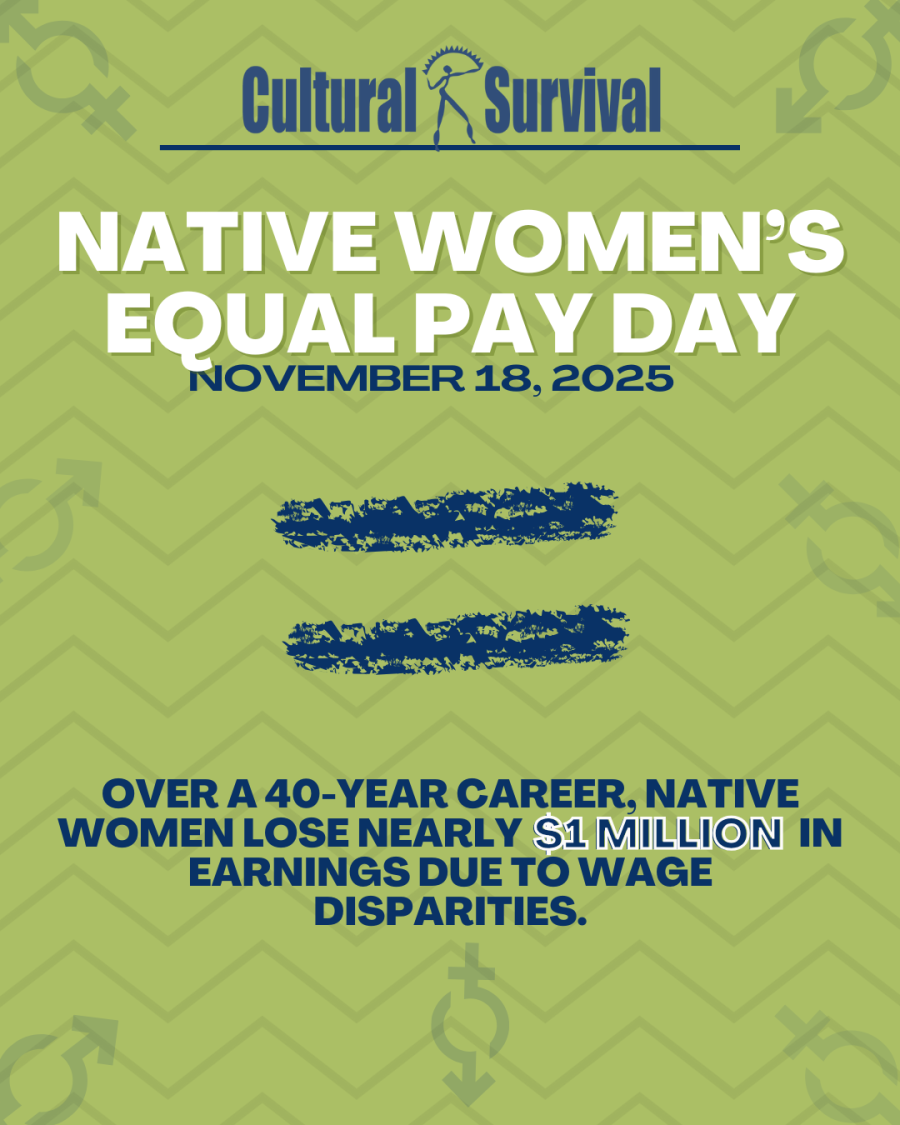After 13 years of litigation and 122 years of waiting, the United States government is finally paying Native Americans for profits earned on 54 million acres of Native land held “in trust” by the federal government since 1887. The $3.4 billion settlement of the Cobell v. Salazar class-action suit was announced December 8th by Blackfeet Nation banker Eloise Cobell, Department of Interior Secretary Ken Salazar, and Attorney General Eric Holder. The settlement will compensate more than 300,000 Indian landholders in western states whose families have received inadequate or no payments on the grazing, oil, gas and recreational leases the federal government has held in trust, or administered on their behalf through “individual Indian money (IIM) accounts” for the past 122 years since the Dawes Act was approved by Congress.
The Dawes Act of 1887 was intended to break up reservations into small individually owned parcels of land, which would be managed by the federal government. Profits from mining, gas, ranching, timber, and other economic activities on the land would be collected by the government and disbursed proportionally to the Native land owners and their families. The government did not, however, follow through on its obligations, either to fully account for the profits or to distribute them to land owners. Eloise Cobell filed the class action suit in 1996 on behalf of Indian land owners to force the government to rectify both failings. This month’s settlement, although much higher than previous offers, is widely seen by Native Americans as being very low in relation to the land’s actual value. In her statement to the media released on December 8, Cobell noted “there is little doubt this is significantly less than the full amount to which individual Indians are entitled. Nevertheless we are compelled to settle now by the sobering realization that our class grows smaller… every day, as our elders die and are forever prevented from receiving their just compensation. We also face the… unavoidable fact that a large number of [IIM] account holders currently subsist in the direst poverty, and this settlement can begin to address that extreme situation and provide some hope and a better quality of life for their remaining years.”
Under the terms of the settlement, the government will set aside $1.4 billion “to compensate [Native landholders] for their historical accounting claims, and to resolve potential claims that prior U.S. officials mismanaged the administration of trust assets.” Attorneys’ and administrative fees will be paid from the fund, and individual account holders can each expect to receive approximately $1,000 for leases that the plaintiffs and scholars have estimated were worth anywhere from $47 billion up to hundreds of billions of dollars. A full accounting of the amount owed was deemed impossible since Department of the Interior officials lost or destroyed many of the records. Three previous Cabinet secretaries from the departments of Interior and Treasury, were held in contempt of court for failing to protect and provide adequate documentation of the government’s fiduciary responsibilities.
The Native American Rights Fund, one of the original nonprofit organizations to file the suit in 1996, expressed support for the settlement, but noted that 100 similar cases are currently pending, and that NARF presently represents 42 tribal governments in a similar suit, Nez Perce, et al. v. Salazar, which alleges mismanagement of tribal trust-fund accounts—versus IIM trust accounts.
“We have been waiting for President Obama and his administration to fulfill his campaign promise to settle the Indian trust-fund litigation, and he has met that commitment,” said John Echohawk, executive director of NARF, in a statement released December 9.
Cobell expressed hope that “significant and permanent reform” in the way that the Interior and Treasury departments manage their trust responsibilities will be the rule moving forward, and said that she was “particularly happy to see recognition of the need for funds to be set aside to promote higher education opportunities for Indian youth.” According to Interior, up to $60 million will be set aside—“in order to provide owners with an additional incentive to sell their fractionated interests”—for an educational scholarship fund to help American Indian students attend college and vocational school.
Some business reports characterized the settlement as a “pittance,” particularly when compared to the recent $180 billion bailout for insurance giant AIG, noting that “the $3.4 billion [settlement] amounts to roughly a third of Goldman Sachs’s government bailout. It’s little more than one-tenth the loss the government expects to suffer from its AIG bailout.”
The 1887 Dawes, or General Allotment Act, broke up communal landholdings against impassioned protest by tribal leaders. The 40 to 160 acre parcels that were allotted to individual tribal citizens have since “fractionated” among the heirs of six succeeding generations so that some parcels now have many hundreds—or even thousands of owners—resulting in the “divided land interests” noted by Interior.
Characterized by President Theodore Roosevelt at the time as “a mighty pulverizing engine to break up the tribal mass,” the Dawes legislation, sometimes called the “Indian Homestead Act,” in fact facilitated the sale—at rock-bottom prices—of 90 million acres of ancestral tribal lands to non-Indian settlers in the 47 years following its implementation. Money from the sale of these “surplus” lands—anything left over within reservation boundaries after plots were assigned to individual tribal citizens—was then used to fund government boarding schools to assimilate Indian children and destroy Native cultures and languages.
To read more:
http://www.cobellsettlement.com/
http://www.bloomberg.com/apps/news?pid=newsarchive&sid=am2L.MPQibzY



